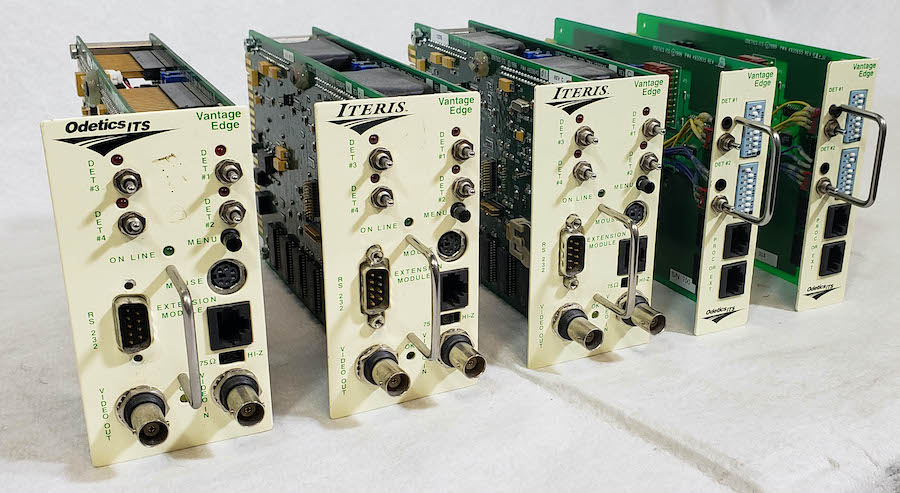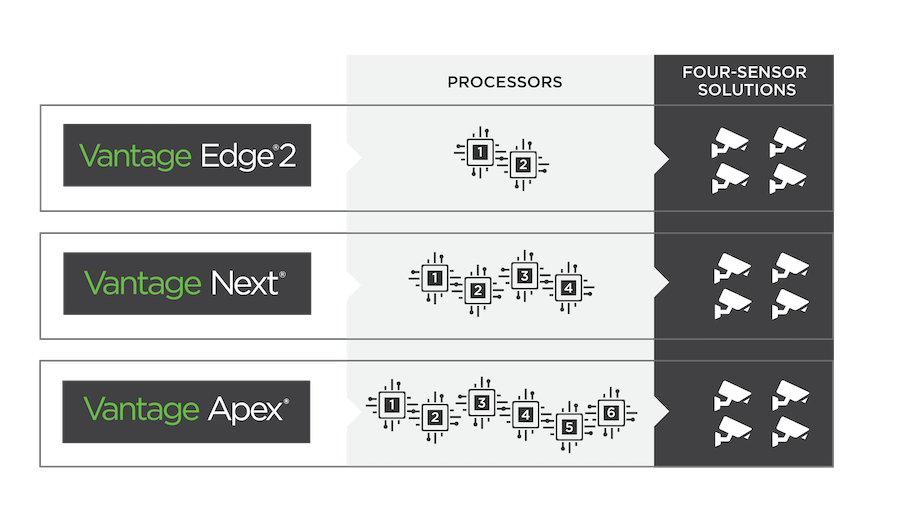Iteris has been a pioneer and leader in transportation innovations for more than 15 years and has had a long history of firsts in the industry.
The Vantage Edge (Edge) detection platform specifically brought with it the first h.264 video streaming and wide dynamic range (WDR) camera, bicycle detection and differentiation, automatic traffic counts and much more.
We have since released powerful, new detection solutions, such as Vantage Next and Vantage Apex, that have become overwhelmingly successful and have replaced the Edge as our newest flagship systems.
As a result, Iteris decided to end-of-life the Vantage Edge product line early last year. While a difficult decision, we knew that it was a necessary step in the evolution of our detection offering.
This article is intended to honor the Edge legacy but also share some of the factors that led to the decision and help guide customers on how to upgrade to our other detection systems.
A Little History: Understanding the Past to Appreciate the Present
In November 2007, I joined Iteris when it only had one detection system – Vantage Edge (Edge). This was the 04/05 hardware platform, where 04 referred to the single and dual video inputs, and 05 referred to the quad video input. The 04 platform was a reworked version of the original Edge 03 platform, which replaced the processor with a newer and more powerful solution.

Vantage Edge Classic, where the Edge line started.

Edge Hardware Generations – From Left to Right: 03 StrongARM Processor, 04 PXA Processor, 05 Quad Channel and 06 NXP Processor.
We later enhanced the Edge offering by adding the EdgeConnect module, which allowed remote setup and video streaming.
In March 2016, we launched a new hardware platform for the Edge, replacing the single-core processor with a quad-core processor, which gave the algorithm and firmware teams more processing power to improve vehicle detection performance, add new algorithms (e.g. PedTrax, SmartCycle) and new features and functions, such as the Vantage Vector hybrid sensor.
Change Is in the Air: New Architecture and the Launch of Next and Apex
Vantage Edge was the cornerstone of our growth for the majority of my first 10 years at Iteris. But customer needs change with time, the competition releases cool new products or features to the market and new technology becomes available.
So, in 2014, we launched – Vantage Next. A platform for the future and a solution for those customers for whom the Edge did not meet their needs.
Vantage Next was a fully integrated, high-performance detection solution that included a BIU function, the ability to stream video and remotely configure and upgrade the system. It provided a simpler and less expensive wiring solution from the cabinet to the sensor on the pole with a single, low-cost CAT-5e cable, better quality video streams and an enhanced setup experience, whether using a PC or the embedded setup tool.
Our customers quickly appreciated the improvements in installation costs, such as less expensive cable, less expensive cable pull costs, and faster setup and configuration.
As we began to take advantage of the greater power of an integrated system, customers began to receive the benefits of extended data sets, real-time data streaming and on-screen data displays.

Vantage Next's enhanced features included extended data sets, real-time data streaming and on-screen data display.
The Future of Detection
After less than 5 years of Vantage Next production, technology was once again changing as were the expectations of our customers. High-definition (HD) cameras and monitors were soon becoming the norm and a lot of effort was being invested into the development of the latest artificial intelligence (AI) algorithms.
In addition, we wanted to supply a solution that would allow customers to retrofit Vantage Edge installations without having to pull cable and instead utilize the power cable from the existing connection to their RZ4 camera.
And so, Vantage Apex was born. Using the latest technology from NVIDIA and able to support all the features we were looking for in a future product, Vantage Apex became the industry’s first full 1080p HD video and 4D/HD radar hybrid sensor with integrated AI algorithms.
Meeting Customers Where They Want to Go: Preparing for the Future in Edge Architecture
One of the main drivers for product development that has not changed in my 15 years at Iteris is performance, performance, performance. Along with this, the market landscape has changed significantly. The industry desires better performance, but also more features, more data and more outputs (SDLC/TS2/BIU, SIU, NTCIP), as well as smarter solutions (AI, self-learning).
The problem with the Cabinet Detector Racks
Most traffic cabinets provide a rack for various detection systems and other devices. In a 332, these are often referred to as the I&J files, while in a NEMA cabinet simply the Detector Racks.
The latest generation graphics processing units (GPUs) from NVIDIA and other leading providers are not suitable to build on a module that can slide into a slot of the input file. Iteris requires this increased processing power to provide the detection capabilities and performance customers need.
In the Detector Racks where the Vantage Edge and its modules live, we are constrained by power limitations, heat dissipation, interconnections and physical limitations. To be specific:
Power limitations
- 5W per slot
- Rack power supplies are notoriously unstable and have power regulation issues. These are fine for loop amplifiers, and we were able to make Vantage Edge work with most but it would require significant to overcome this problem.
Heat dissipation
- More powerful processors and additional power supply components resulted in additional heat generated, which required more heatsinks in the design to maintain the NEMA temperature range
Interconnections
- Too many interconnections between modules. It would be difficult to close the cabinet door with so many patch cables.
Physical limitations
- Limited space in an input file
As a matter of record, as we developed new detection platforms, the number of processors required to meet the specifications continues to increase at an exponential rate.

Decisions, Decisions, Decisions: Changing to Vantage Apex or Vantage Next
With the end of Vantage Edge, agencies may be wondering what the right system is for them. Both Vantage Apex and Vantage Next provide the best detection available in the industry. As a user, you need to look at the differences to determine the one that meets your needs. Some questions to ask yourself are:
- Do I have existing cabling I want to utilize (ex. power cable, Cat-5/6)?
- Do I need high-definition video streams?
- Can my network support higher bandwidth requirements of HD video?
- Do I need advanced object classification data?
- Do I have the space in my cabinet(s)?
- Do I have future requirements that might be better supported by one system?
We suggest speaking with your local Iteris representative or contacting Iteris to learn more about the differences and determine what might be the best option for you.
Thank You for Your Service
It is a difficult decision to discontinue a product with as much longevity and impact on the industry as Vantage Edge. But after careful consideration, we decided that all good things must come to an end, as they say.
There are still many intersections currently using Vantage Edge’s predecessor – Vantage Plus – and performing well. The same will be true of Vantage Edge. In 20 years, people may open a traffic cabinet and be surprised to see an Edge system that they have forgotten about because it continues to operate reliably with minimum maintenance.

Vantage Plus detection system still functioning after 20+ years.
The future of Iteris detection will continue to go from strength to strength with Vantage Apex, Vantage Next and VantageRadius as we continue to add features and functions. These systems put Iteris in a strong position to support the ever-growing needs of our customers and the transportation community.
We are excited to usher in a new era of our detection offering – even if it is without a key player from the past. Goodbye Edge, and enjoy your retirement.
About the Author:

Michael Whiting is VP, Engineering, Advanced Sensor Technologies at Iteris.
Connect with Michael on LinkedIn.



